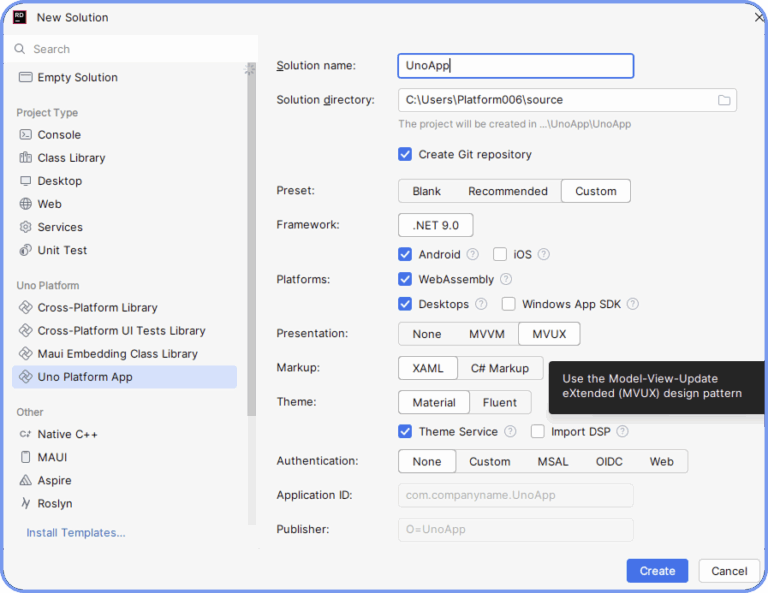Save 20% on Uno Platform Studio Pro until Dec 22 at 11:59 PM.- use code 68WVVMRQ at checkout.
🕓 4 MIN2025 was a …
For over a decade, the Model-View-ViewModel (MVVM) pattern has been the go-to architecture for XAML developers. It brought structure, testability, and a clean separation of concerns to our applications. But what if the pattern we’ve relied on for so long is starting to show its age? What if there’s a better way?
That’s the provocative question one of our own engineers, Nick, asks in his recent article, “Stop Using MVVM”. He argues that for all its benefits, MVVM often introduces unnecessary friction and complexity into modern app development.
In this post, we’re going to look at his key arguments and the powerful alternative he proposes. One that eliminates the boilerplate, simplifies state management, and makes your apps more predictable.
Nick puts into words what a lot of devs have been feeling: MVVM’s boilerplate and rigid patterns are slowing things down. Here are some common pain points:
The Boilerplate Tax: Every property needs backing fields, OnPropertyChanged calls, and change notifications. A simple text input becomes 10+ lines of repetitive code.
Scattered State: Complex screens spread their state across dozens of properties—IsLoading, IsError, CanExecute, SelectedItem. There’s no single source of truth.
Command Explosion: Every user interaction demands its own ICommand. Your ViewModels become bloated with button handlers that often overlap in responsibility.
Silent Failures: String-based bindings fail at runtime, not compile-time. A typo in a binding path means hunting bugs without compiler help.
Modern apps are more asynchronous and state-heavy than when MVVM was designed. The pattern that served us well is now creating friction where we need flow.
The result? Nick’s real-world example demonstrates a complex business search feature that reduces 50+ lines of MVVM boilerplate to just a handful of MVUX declarations.
Here’s where the story gets exciting for our community. While other platforms leave you to build reactive infrastructure from scratch, Uno Platform ships with everything you need to adopt MVUX today.

Zero-Setup Experience: Simply select MVUX during project creation,no additional setup or build system changes required.
Automatic Code Generation: Define your immutable models, and our tooling generates the reactive ViewModels automatically. You write the what, we handle the how.
Smart UI Controls: Our <FeedView> control understands async operations natively. Bind it to a data feed, and it automatically shows loading indicators, handles errors, and renders result. No manual state management required.
Cross-Platform Ready: Whether you’re targeting Windows, Web, iOS, Android, or Linux, MVUX works consistently across all Uno Platform targets.
The provocative headline begs the question. The answer is nuanced: No, but its role as the default choice for modern, complex applications is being seriously challenged.
The fundamental issue is not that MVVM’s goal of separation is wrong, but that its implementation is ill-equipped for the highly asynchronous and state-complex nature of modern applications.
Read the original post and explore Nick’s full take on his blog: Stop Using MVVM.
Uno Platform 5.2 LIVE Webinar – Today at 3 PM EST – Watch